There is a tendency to think of the places that have been developed as being the home of humans and not much else. On the Outer Banks, that’s not quite the case. There are a lot of animals that are our neighbors, and many of them are thriving, if often hidden from view.
There are birds, some really cool turtles, marine life…but for right now, we’ll start with the mammals of the Outer Banks.
Two that are so common we’re not going to write about them.
Squirrels
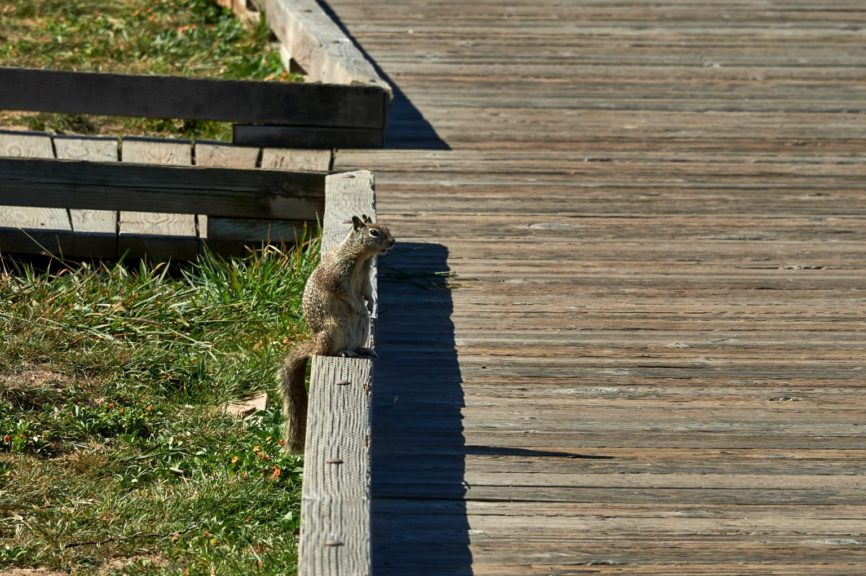
Look in any tree. Watch the Eastern Gray Squirrels scurry about. Fill a bird feeder with seed. The birds get nothing. The squirrels get it all.
Marsh Rabbit
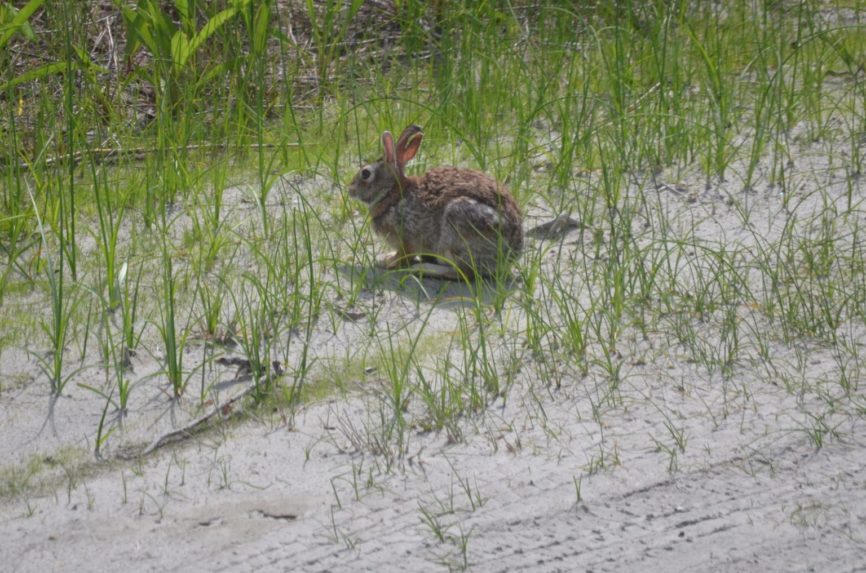
Primarily nocturnal, but there is a good possibility that a marsh rabbit will be seen during the daytime on a visit to the Outer Banks. During the summer they seem to line the road between Whalebone Junction in Nags Head and the Marc Basnight Bridge.
Very similar to the eastern cottontail, but the marsh rabbit has a brown tail. If you see a rabbit with a white tail, it’s a cottontail, which occasionally stops by for a visit.
Common and probably seen – Native to the Outer Banks
White Tailed Deer
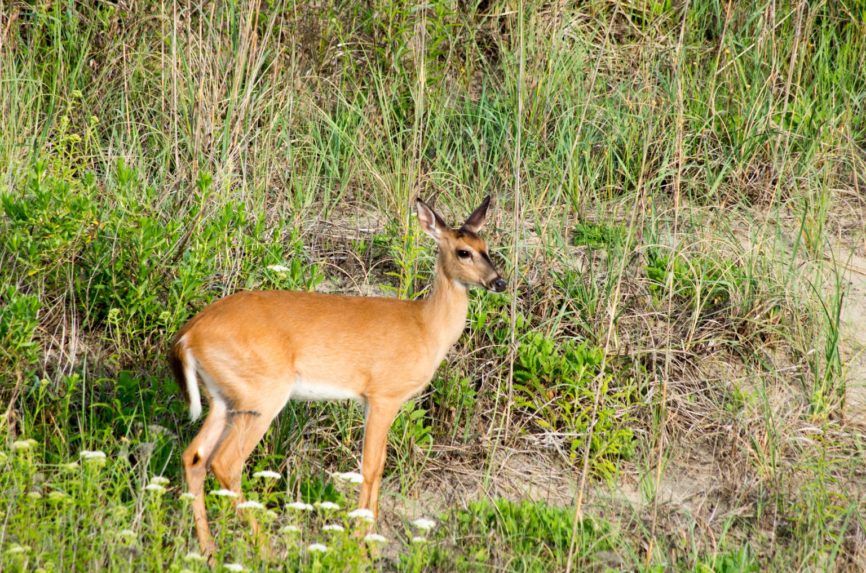
One of the most common mammals to see on the Outer Banks. White-tailed deer are usually seen early morning or dusk. Because they are edge feeders, look for them especially in an open area close to thick underbrush or trees. If startled that’s where they run and hide.
Other than humans, there are no predators to keep the population down, and hunting of deer is permitted in very few places on the Outer Banks.
The local deer tend to be smaller than mainland deer. Originally that was because of limited food; with yummy gardens and grass abundant now, that may be changing.
Fox—Red and Gray
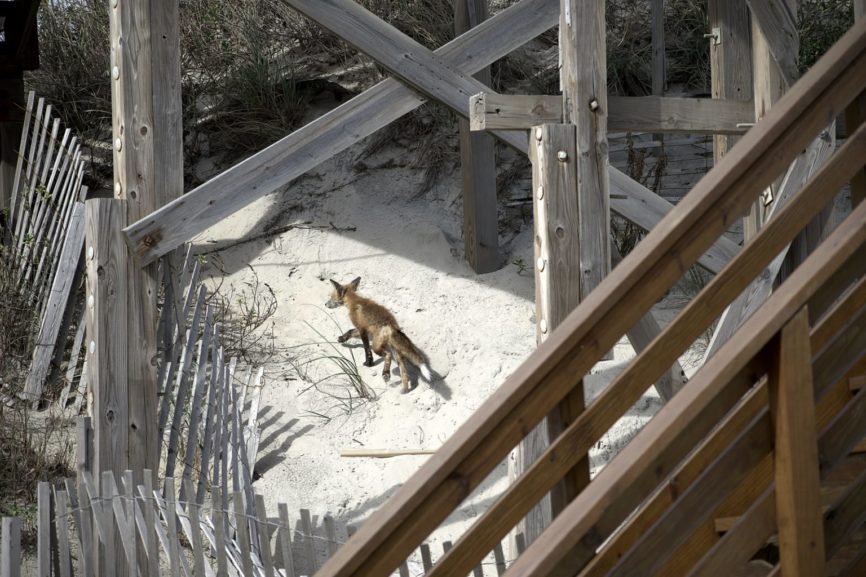
They look very similar but red and gray foxes are distinct species of canines. Generally, but not always, red fox fur is a brownish red with black feet. Gray foxes tend to have a more gray fur with a stripe down their back. If you get a good look at a gray’s face, it’s a little wider, giving it an almost catlike appearance.
Both tend to be solitary animals and primarily nocturnal, although red fox especially will make an appearance if there’s food to be had.
If you see a fox in a tree, it’s a gray fox; they are the only member of the Canidae family that can climb trees.
Common but not usually seen – Native to the Outer Banks
Opossum
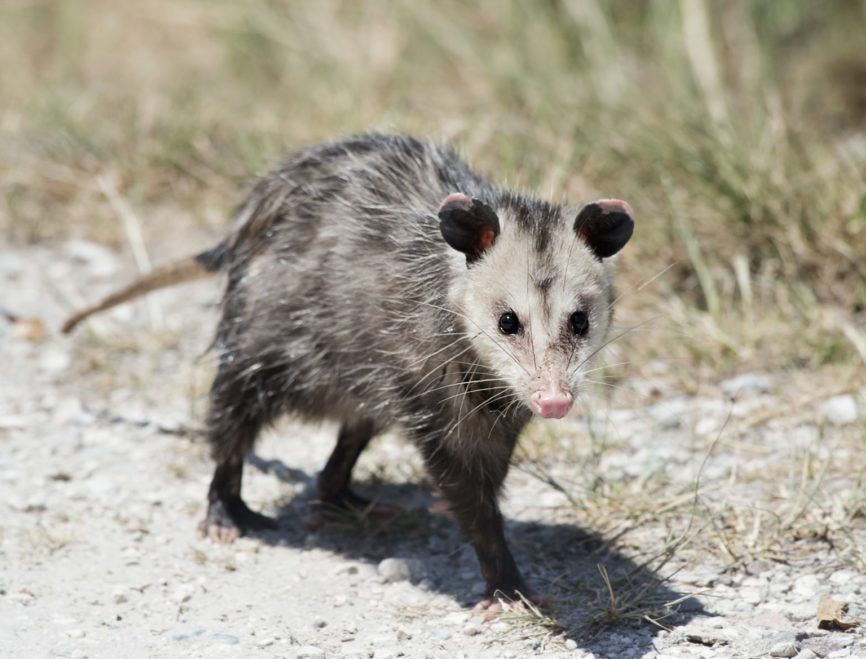
Opossums are nocturnal animals and a great neighbor to have. They eat just about every pest we don’t want around, including, research has shown, ticks. It seems they’re enthusiastic groomers and when they groom, the ticks become dinner.
Opossums are opportunistic feeders. Leave pet food out, and they’ll share with a dog or cat. Although they rarely knock trash cans over, if a raccoon does, with all that garbage strewn about, it won’t take long for an opossum to show up.
When cornered, they’ll show their teeth—which are quite sharp—and hiss. It looks scary, which is what they want because they don’t want to fight. If that doesn’t work and they can’t run away, opossum keel over into a catatonic state that can last for hours.
Raccoon
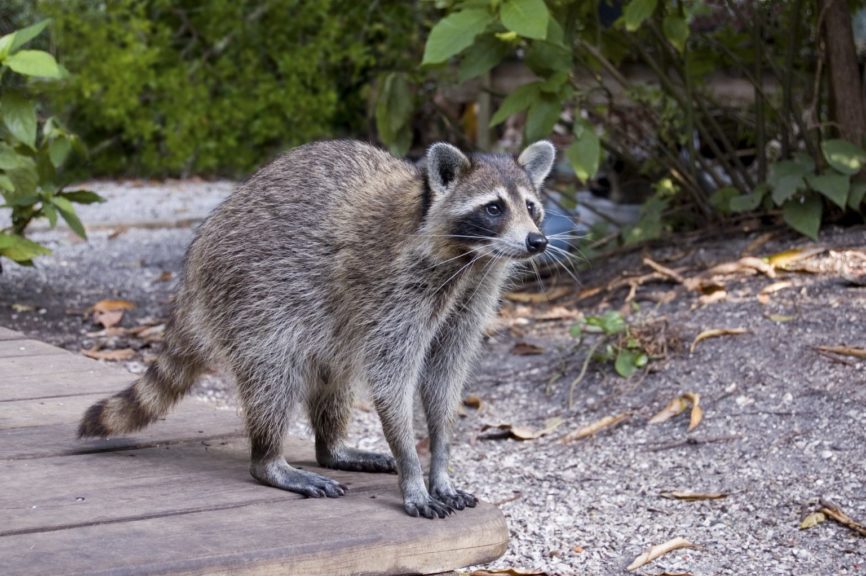
Smart and one of the most adaptive of all animals, raccoons are everywhere on the Outer Banks. They are nocturnal, so daytime sightings are rare, although they can sometimes be spotted at dusk or dawn.
If you don’t seal a trash can or leave some pet food outside, it’s like an open invitation to the local raccoon population. They are also very successful in the wild and are common in all Outer Banks maritime forests as well as Pea Island National Wildlife Refuge.
Surprisingly fast, their forepaws end in five finger-like digits, giving them an amazing ability to grasp objects. There’s no opposable thumb, so they’re not quite at human standards, but to grab bird eggs, frogs, really almost anything, raccoons are very adept.
To human eyes, they look cute and cuddly. They are not. They will attack if they feel cornered.
Coyote
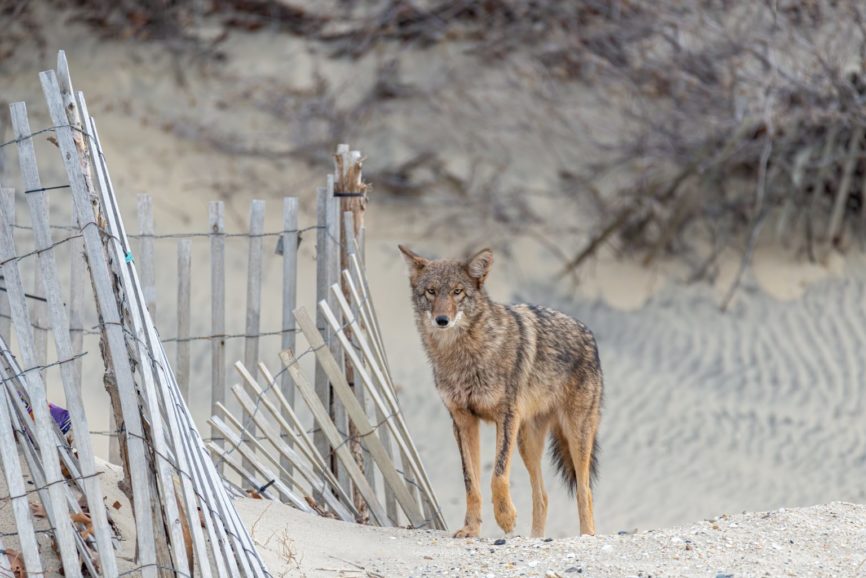
Coyotes may be the only mammal that rival raccoons at adapting to any environment. Originally a part of the great plains and deserts of the United States, they have steadily expanded their range and today are found in every state except Hawaii.
Most active at dusk and dawn, it’s easy to mistake coyotes for dogs. The longer snout is the easiest way to tell the difference.
An opportunistic feeder, coyotes will take whatever is available, including small pets.
Muskrats
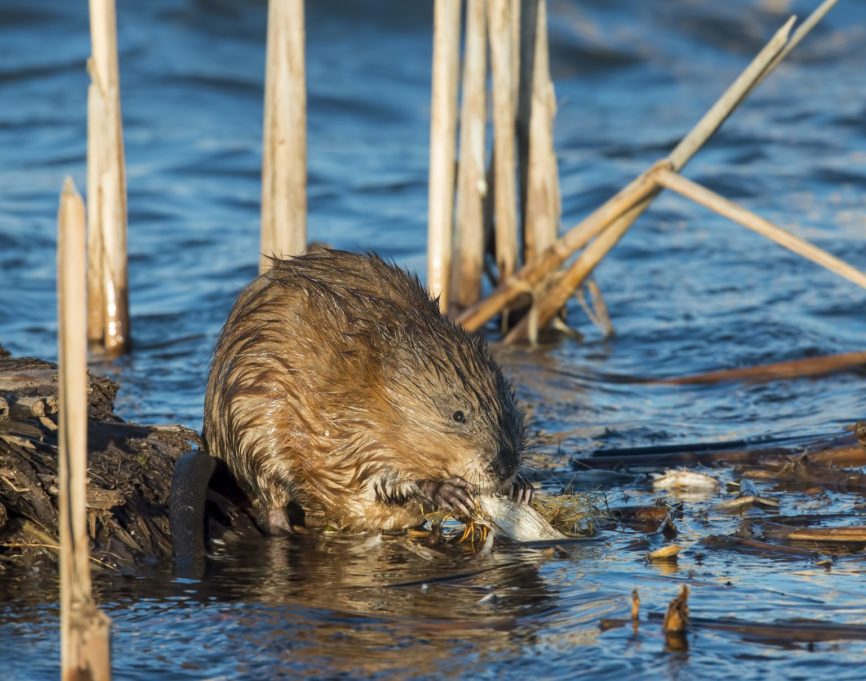
Muskrats need shallow water and dense vegetation which is why they thrive in Outer Banks marshes and estuaries. There is little chance of seeing one, though. They’re small, about the size of a large rat, mostly nocturnal, and tend to live in areas where humans don’t regularly travel.
Feral, Introduced
Wild Horses
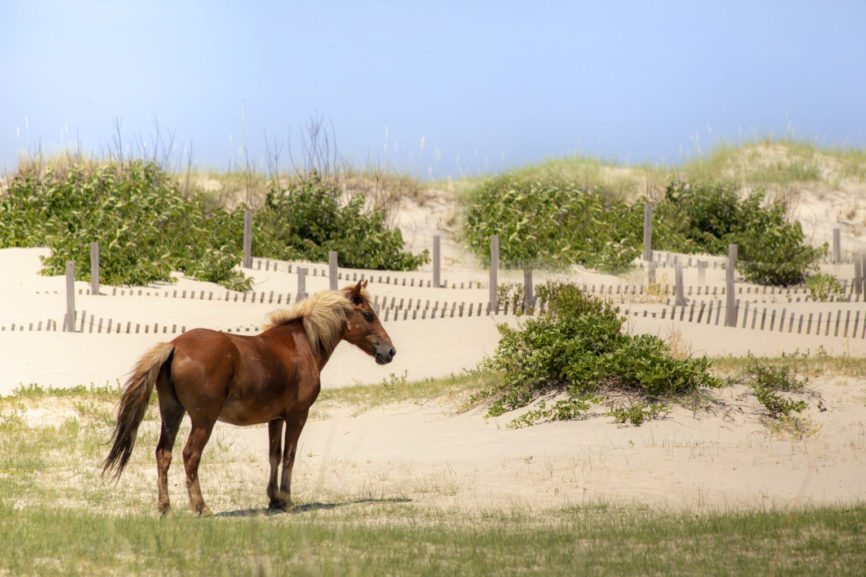
The Corolla Wild Mustang herd is not truly a wild animal. Even though they have been in North America for around 500 years, they are considered a feral or introduced species.
That feral designation has created controversy with wildlife management agencies, US Fish and Wildlife in particular. The agency contends that the horse competes with other species, depriving them of food. They also point to the feeding habits of the horse on native grasses, believing that they overgraze and degrade the environment.
There have been some studies, however, that suggest the Outer Banks horses do not graze the grasses all the way to ground level, allowing the grass to regrow. If that is their feeding habit, the most likely explanation is the horses do not wish to eat sand.
Nutria/Coypu
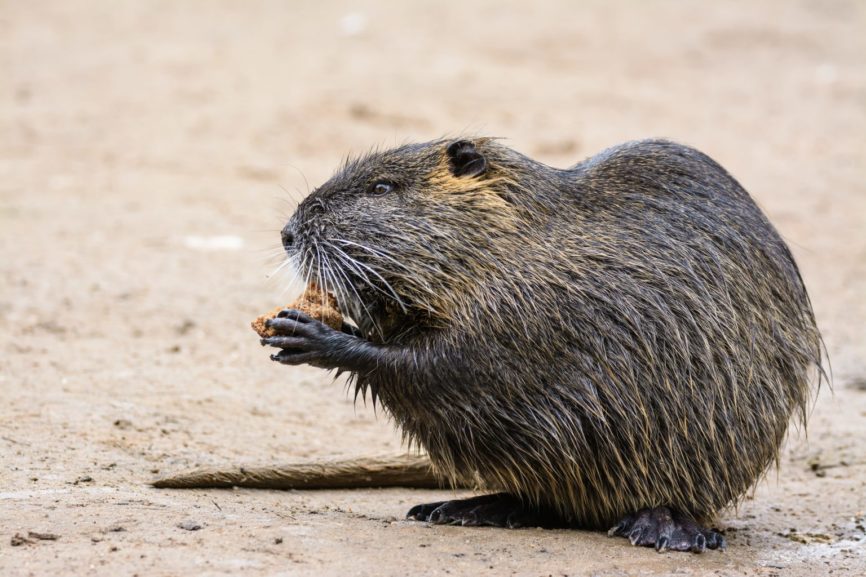
Nutria is a large rodent native to South America. Bred for its fur, it was introduced to the United States between 1899 and 1930 according to US Fish and Wildlife.
It has proven to be a very destructive invasive species, competing with the much smaller native muskrat for food and other resources. Additionally, Nutria are burrowers and have caused considerable damage to roadbeds and shorelines.
Red Wolves
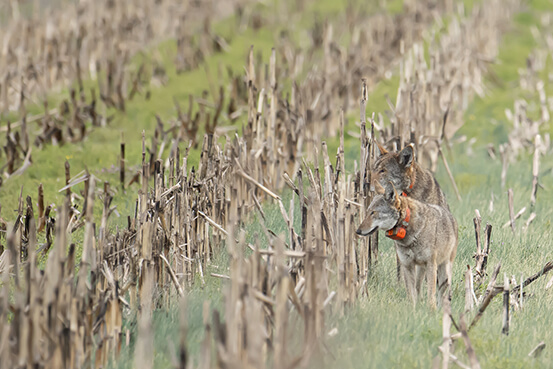
Although wild red wolves were officially declared extinct in 1980, the Red Wolf Saving Animals From Extinction (SAFE) program, together with zoos and conservation centers, has worked to keep this endangered species alive. Today, Alligator River National Wildlife Refuge is the only location where red wolves live free. They were reintroduced to the wild through the SAFE program, but their population of roughly twenty wolves is very small, and red wolves remain the most endangered wolf species on the planet. All of the red wolves on the Outer Banks are tagged with bright orange radio collars.
If you’re lucky enough to see one while visiting the Alligator River National Wildlife Refuge, be sure to stay at least 100 yards away and report the sighting to 1-855-4WOLVES to aid conservation efforts. Keeping your distance helps keep these beautiful animals wild.
You can find details on the program in this handy PDF.
Wild Boar
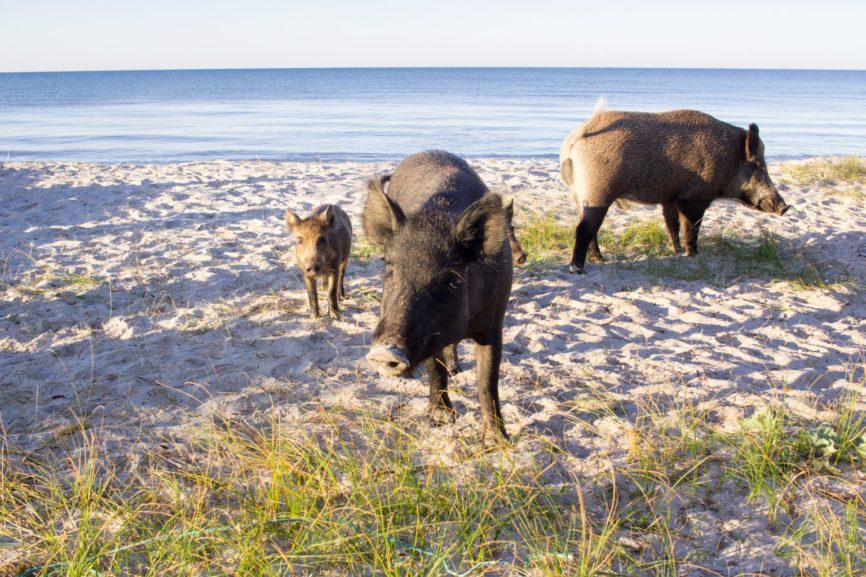
Much like the wild horses, wild boar are not truly wild, but are an introduced species. In northeast North Carolina, wild boar were probably introduced by English settlers early in the 1600s.
Because domestic pigs are remarkably self-sufficient animals, a theory holds that the settlers, wanting to have meat available but not wishing to invest in raising the animals, released pigs knowing they could hunt them when needed. However, with no natural predation, and being a very smart and adaptive animal, wild boar quickly spread out from their first home.
Combined with other locations where they were introduced, wild boar are now found in every state.
The most likely place to see one is Carova.





